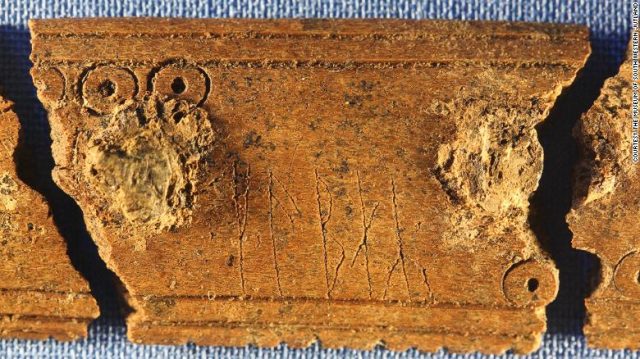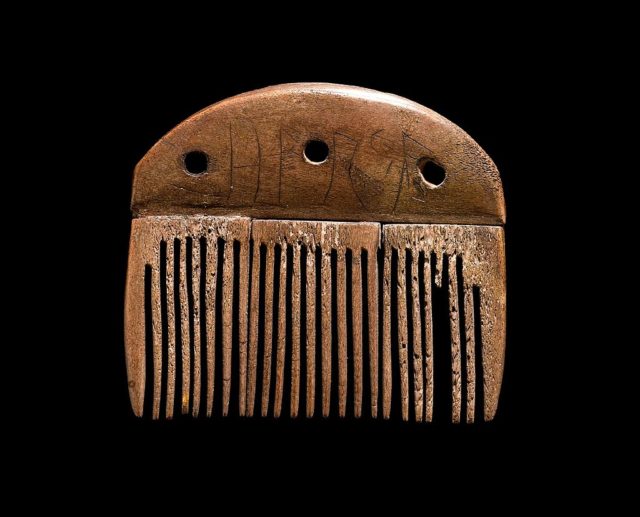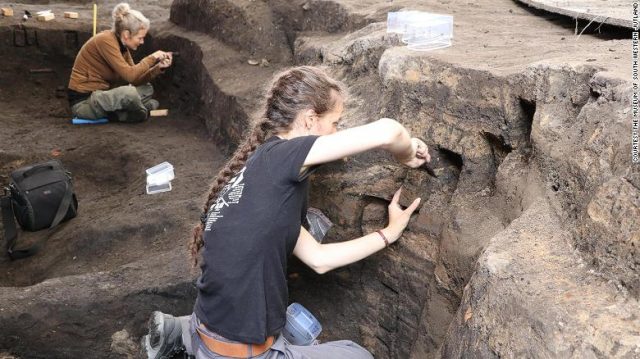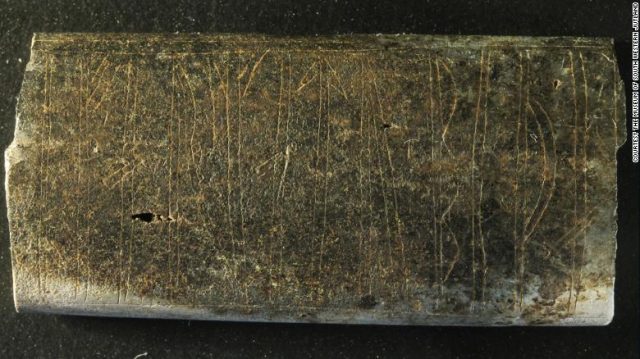A 1,200-year-old comb, discovered in 2018 in Denmark, is shedding light on the birth and development of the Viking alphabet.
When a team of archaeologists first discovered the fragments of a comb, they didn’t think it was necessarily a breakthrough.
Combs are among the most common archaeological remains of the Viking Age.
The archaeologists scooped it up in a pile of soil and sent it to the conservation lab, following procedure.

After they got a call, they gave the comb another look. It had several lines etched into it, spelling out a word in runes, the ancient Viking alphabet.
The word “comb” was inscribed on one side while what is a version of “to comb” is on the other.
It was the late 8th century, a critical time for the Vikings. Their age began just before 800 AD and language in the region had undergone hundreds of years of evolution.

The comb provided evidence of the birth of the new runic alphabet that emerged around 800 AD. Previously, the Vikings used a more complicated alphabet known as the 24-character futhark.
The alphabet was reformed in the 8th century to include just 16 runes. The simplified script spread rapidly across the Viking world, and continued to be used for centuries.

The comb was discovered during excavations of Ribe — an 8th century settlement that claims to be Denmark’s oldest town. It was found alongside a small plate made from bone or antler, with another short runic inscription.
“We are seeing the birth of something major in Scandinavian history,” archaeologist and excavation leader Søren Sindbæk, from Aarhus University, Denmark, said in an interview with CNN. “It’s a very rare discovery… We were a bit embarrassed that we hadn’t even thought about cleaning it a little.”

What matters most for Sindbæk is that these artifacts show a variety in the usage of runes, according to MSN. There are only four examples of early runic inscriptions from Ribe — including the two recent discoveries — and all suggest a different purpose.
“While the comb shows some scribbling,” says Sindbæk in an interview, “the other inscription has very formal runes, that were clearly part of the decoration of the object.”

Sindbæk believes the labelled comb could have been used for teaching, sharing, or experimenting with the skill of writing.
Gareth Williams, a Viking specialist from the British Museum, agrees that this is possible, according to CNN.
“A lot of runic inscriptions on objects look like practice pieces,” he says. “It may just be that someone was practising and chose to use words inspired by the object itself. “The finds demonstrate the spread of literacy.
“As more finds like this are discovered,” continues Williams, “it becomes more likely that a significant proportion of the population in the Viking Age could read and write.”
“In terms of popular perceptions of the Vikings today, that is quite surprising,” he adds, “but perhaps no more than the fact that Viking combs are extremely common, indicating that the Vikings liked to keep their hair neat and tidy.”
